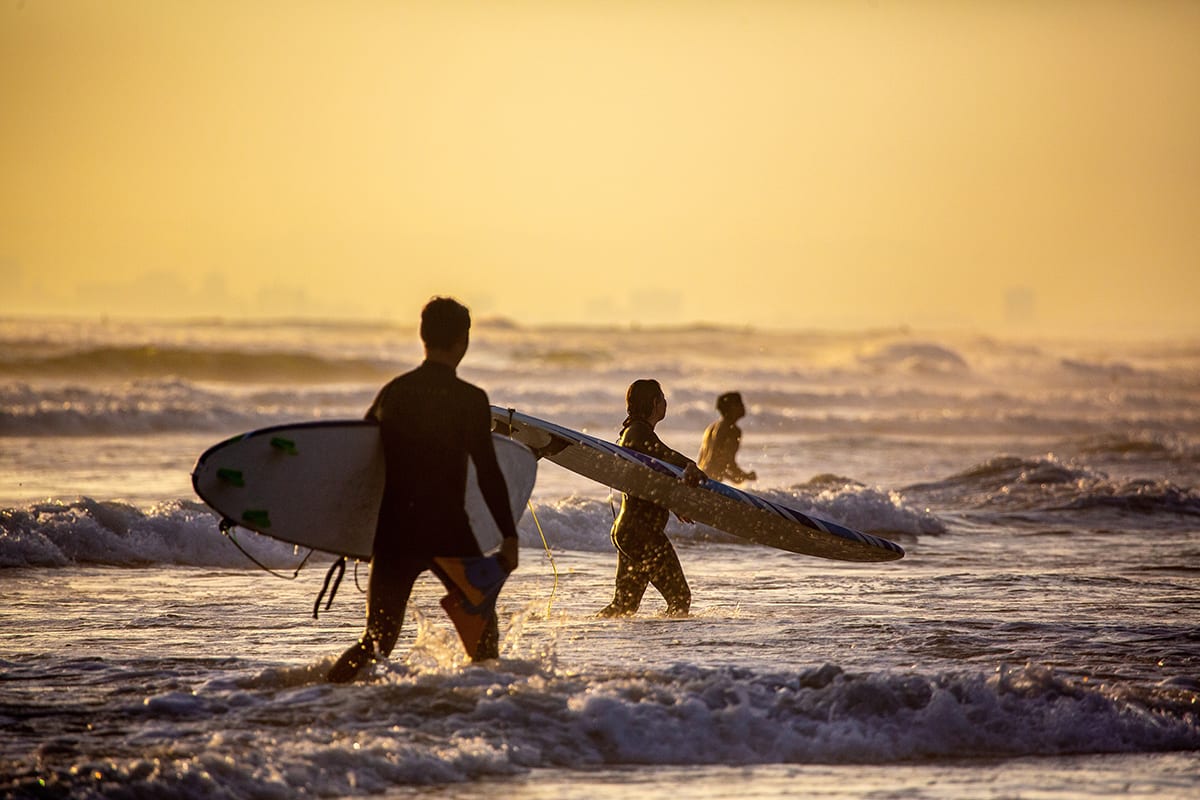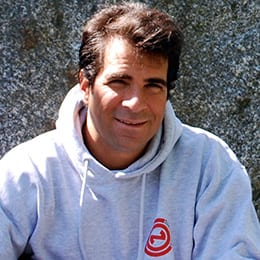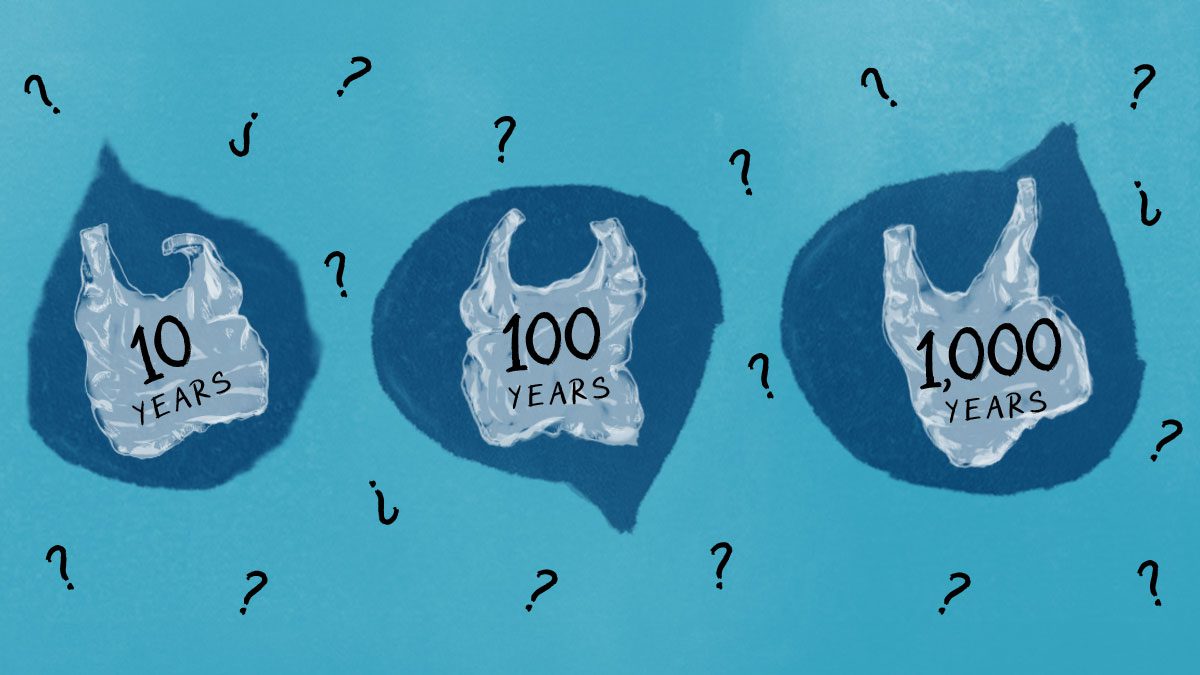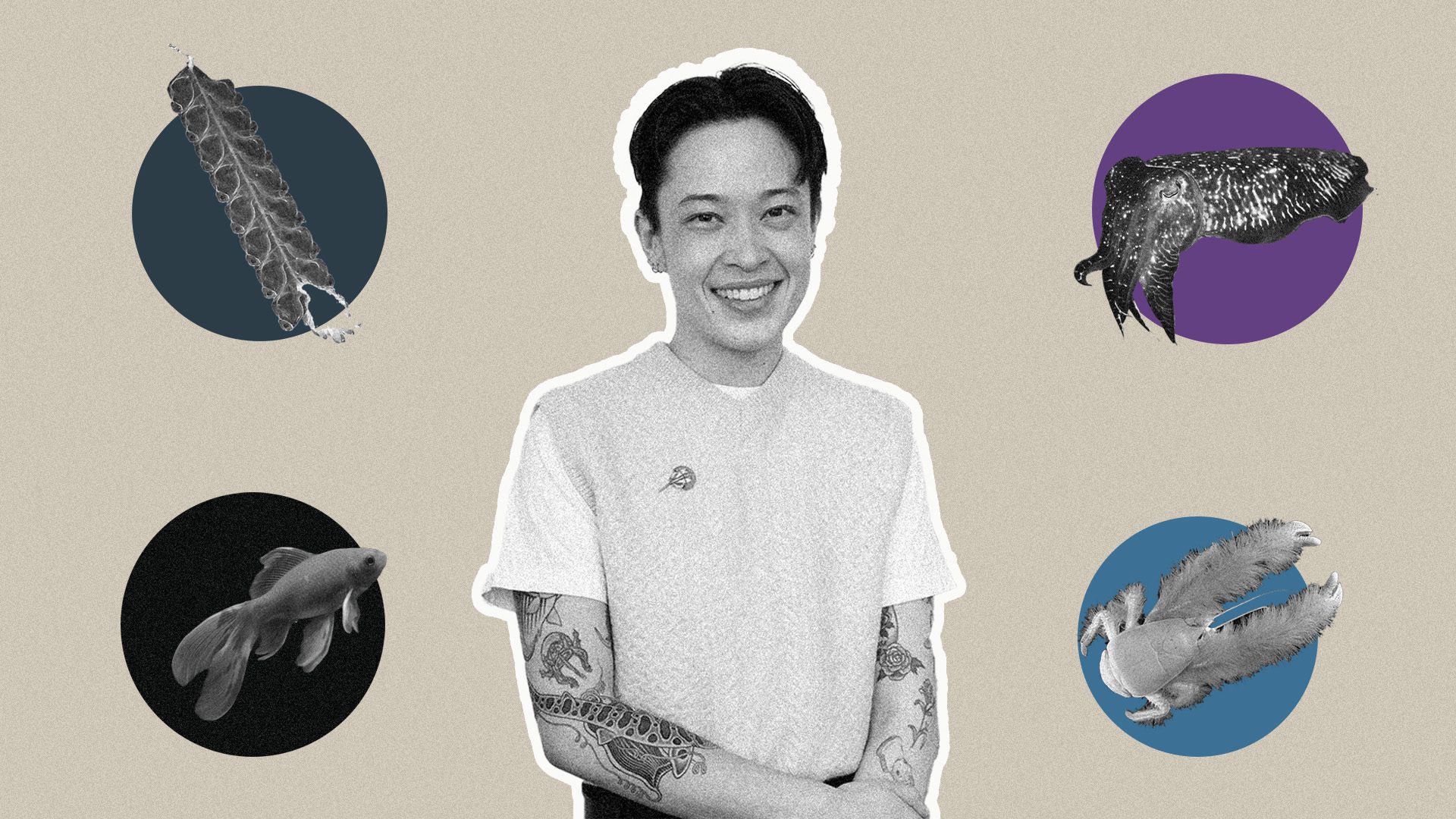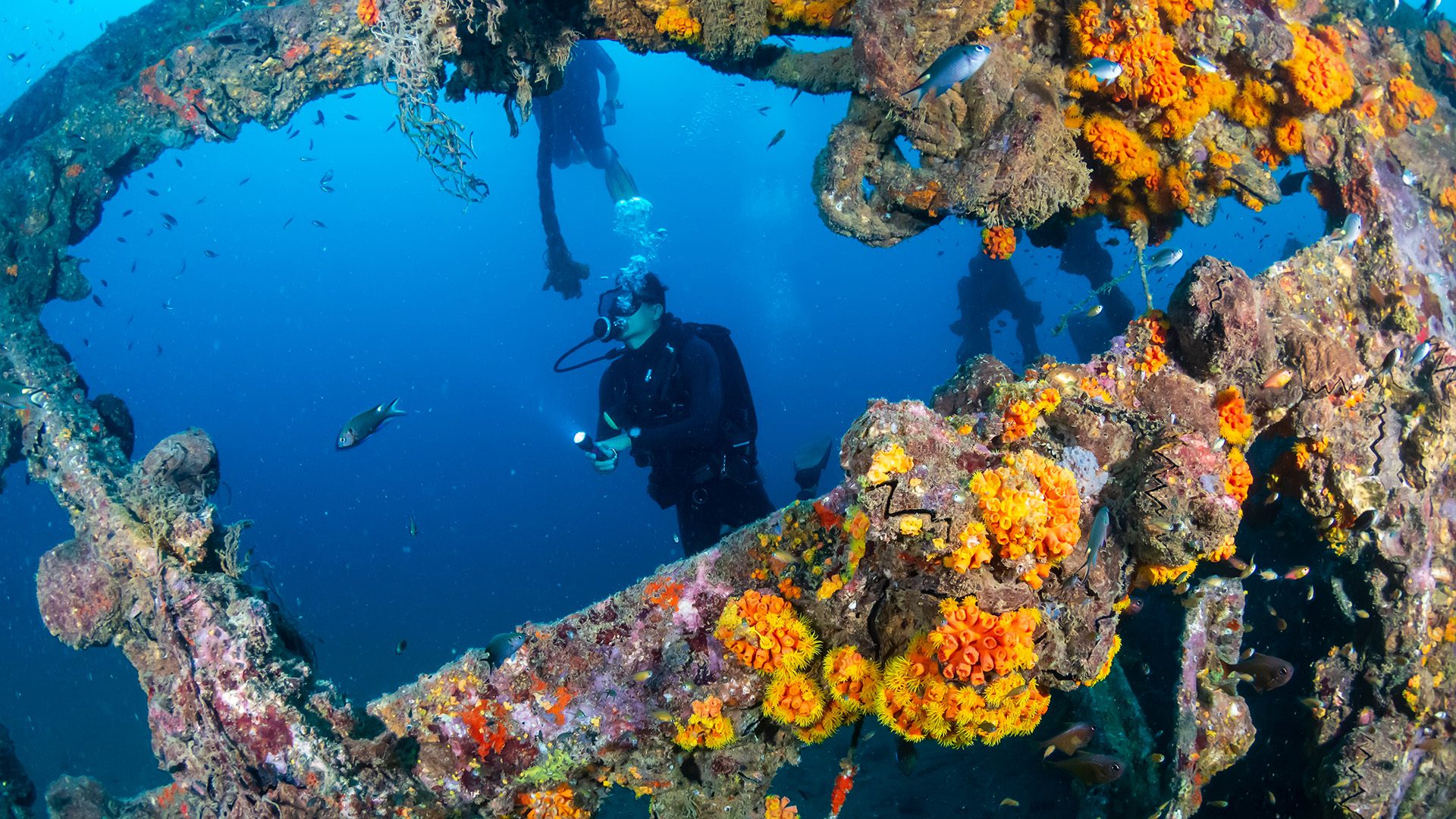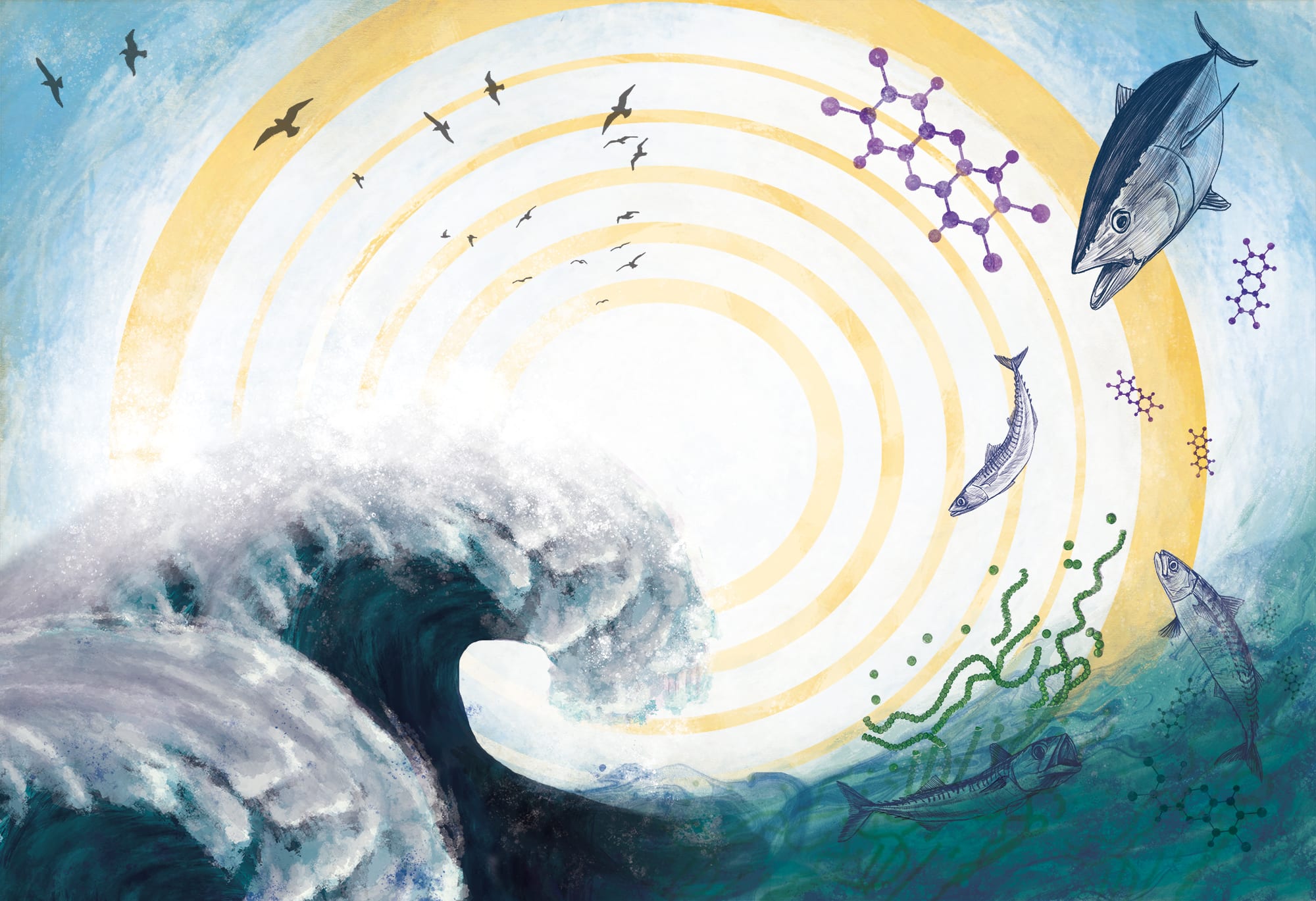
A Sea of Hazards
How researchers are safeguarding us from the perils of a changing ocean
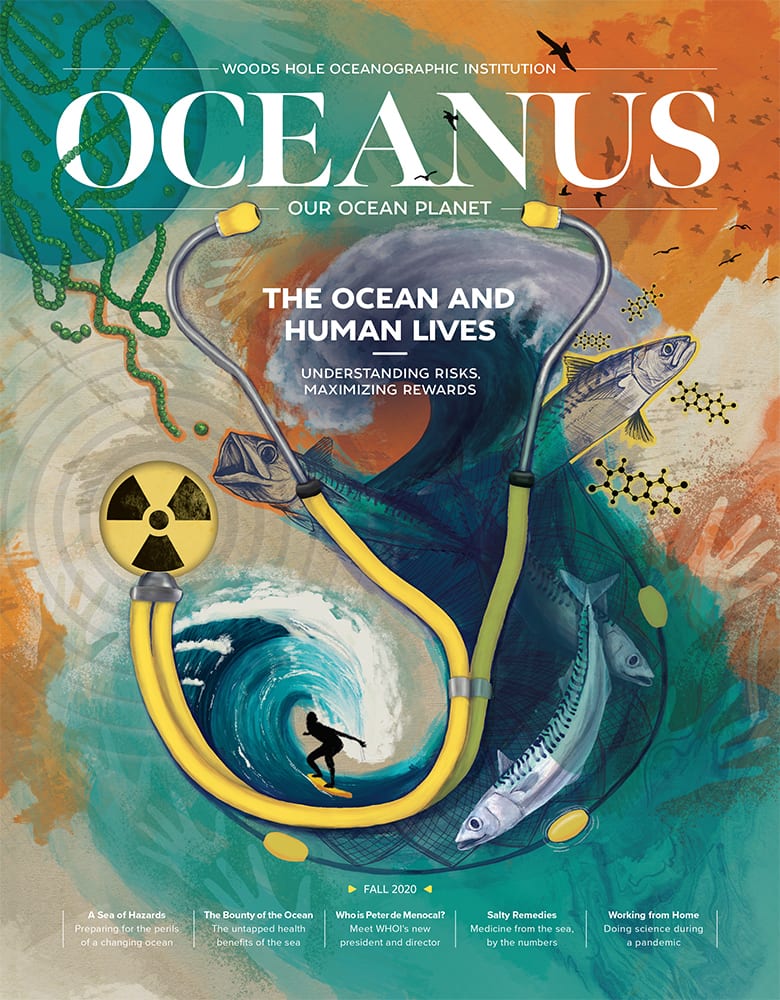 This article printed in Oceanus Fall 2020
This article printed in Oceanus Fall 2020
Estimated reading time: 25 minutes
It had to have been the mussels.
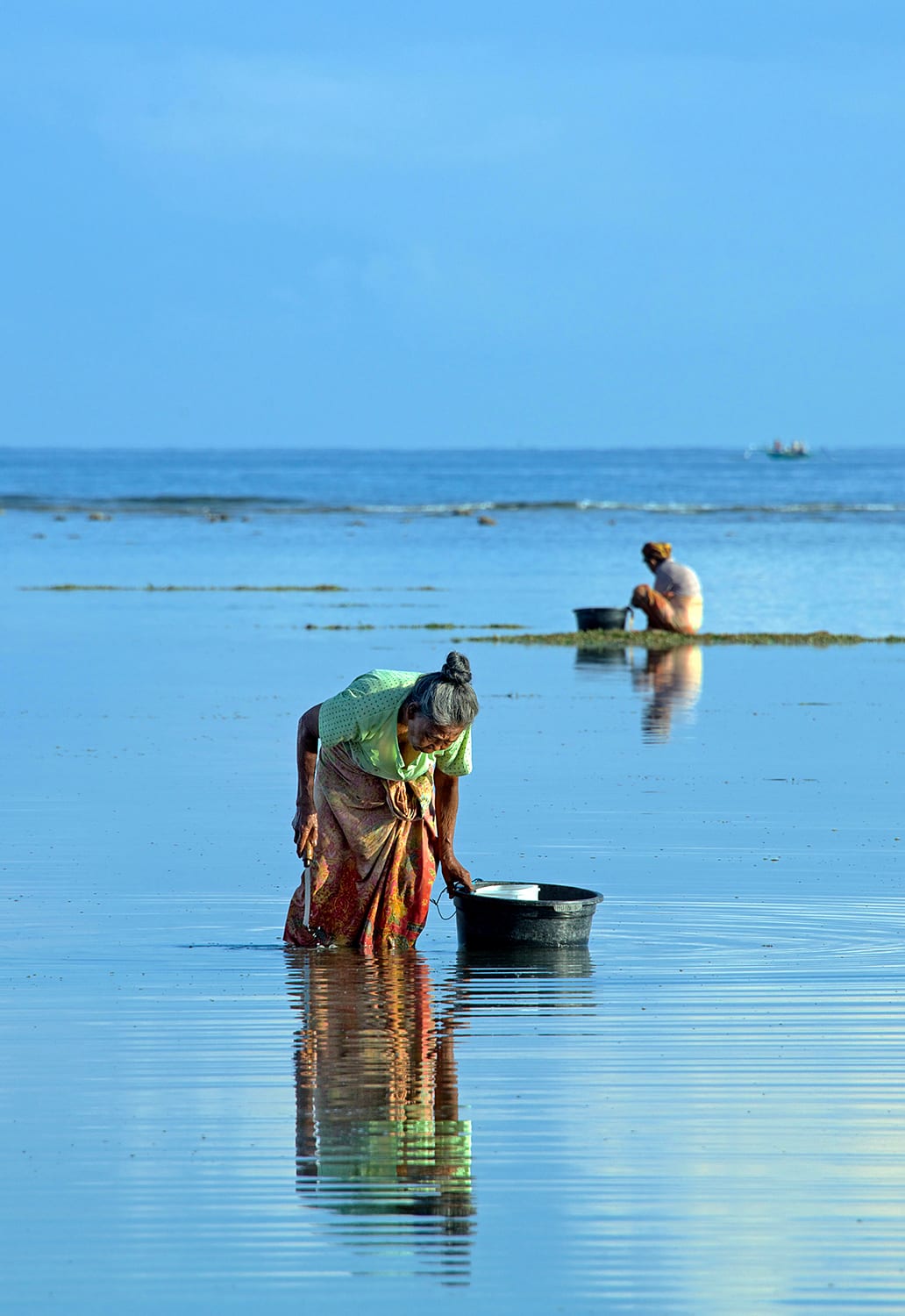
Women collecting shellfish in Lombok, Indonesia. (Photo by A. David South © Alamy)
Around 3:00 am, the 62-year-old woman—who we’ll refer to as Diana to protect her identity—became nauseous a few hours after her midnight snack. The soup she ate was chock-full of freshly harvested mussels. Her nausea quickly turned to lightheadedness, vomiting, and mental confusion. Diana’s nervous system was under attack, and by the time she got to the hospital, the muscles responsible for speech became impaired, interfering with her ability to vocalize. In the ER, she felt like her throat was closing up, forcing doctors to put her on a ventilator until the next day when she recovered enough to be discharged.
This bout of shellfish poisoning (it was the mussels) happened just a few years ago, but human beings have suffered all sorts of maladies, from various types of fish, for centuries.
In the fourth century, Alexander the Great forbade his soldiers to eat fish before conquests, and in 1774, Captain James Cook fell ill while exploring the South Pacific. “I had almost lost the sense of feeling; nor could I distinguish between light and heavy bodies, of such as I had the strength to move; a quart-pot, full of water, and a feather being the same in my hand,” noted Cook, who was likely affected by potent neurotoxins in a toadfish he ate.
In the modern era, changes in global climate, warming ocean conditions, and other human-caused factors have rendered the ocean a sea of hazards. Harmful algal blooms (HABs), ocean pollutants, and marine pathogens are just a few of the dangers that increasingly threaten human health.
"Human populations near the coast continue to increase, so the interactions people have with the ocean have become increasingly important from a public health perspective.”
—John Stegeman, Woods Hole Oceanographic Institution
The problem is vast in scope. More than half the world’s population lives along the coast, and the global ocean blankets over 70 percent of the Earth’s surface. Billions of people rely on the oceans for protein-rich sustenance, for novel medications used to treat everything from breast cancer to malaria, and for physical and mental well-being. The question of how to make the oceans safer for human beings has spurred one of oceanography’s fastest growing areas of research, oceans and human health (OHH).
“Human populations near the coast continue to increase, so the interactions people have with the ocean have become increasingly important from a public health perspective,” says Woods Hole Oceanographic Institution’s John Stegeman. He is head of the Woods Hole Center for Oceans and Human Health, one of four such centers throughout the United States. He and other researchers have been investigating the ocean’s most critical human health threats to understand them better and develop strategies aimed at minimizing impacts. A lot is riding on what they discover.
“The role oceanography plays in keeping people healthier and safer has never been as important as it is today,” Stegeman says. “Exposure to marine toxins and pollutants can lead to respiratory and cardiovascular problems and immune effects, underlying conditions that can make us more susceptible to emerging viruses like COVID-19.”
Harmful algal blooms
It was the ultimate avian attack: thousands of seemingly possessed seagulls, ravens, and other birds flocked furiously above hordes of people running for their lives.
It may have come straight out of Hollywood, but the idea behind Alfred Hitchcock’s 1963 blockbuster movie The Birds may not have been so crazy after all. Hitchcock had seen a newspaper story in The Santa Cruz Sentinel describing a flock of crazed seabirds that “pelted the shores of North Monterey Bay” and began flying into objects as they regurgitated anchovies.

A scene from the 1963 Hollywood horror classic, The Birds. The movie drew inspiration from a real-life situation in Monterey Bay, California where seabirds became disoriented and began slamming into homes after ingesting toxic algae. (Photo Courtesy of Universal Studios Licensing LLC)
The seabirds—called sooty shearwaters—had snacked on anchovies from the bay where toxic algae had bloomed into dense patches near the surface. The algae produced a toxin called domoic acid which can cause confusion, disorientation, seizures, and even death. The toxins were taken up by plankton, which were eaten by the anchovies and then eventually the birds. Of all the ocean-related human health risks, harmful algal blooms (HABs) are among the most dire. Often referred to as “red tides,” these vast, swirling patches often put on a
dazzling show from space, but in the ocean, some produce toxins that can cause a range of human health problems, including neurological disorders, respiratory infections, paralysis, and death. One particular toxin, known as saxitoxin, is so baleful that it was declared a chemical weapon in 1993.
HABs occur when single-celled algae in the ocean accumulate, often due to interactions between their swimming behavior and the movement and structure of the water column. As microscopic algal cells multiply, they sometimes form visible “blooms” that discolor the water. Some blooms are small, localized events affecting bays and estuaries; others can affect larger stretches of coastline than a major hurricane.
In either case, the human health risks of HABs are substantial, and blooms are more common than ever before. In fact, scientists believe that there are more toxic algal species, more affected areas, and higher economical losses today than just 30 years ago.
“The HAB problem has been growing at a time when people are relying more than ever on the ocean for food, recreation, and commerce,” says Don Anderson, a senior scientist at WHOI and Director of the U.S. National Office for Harmful Algal Blooms. “This area of research has gone from just a handful of scientists in the 1970s to a national program that includes scientists from oceanography, ecology, engineering, economics, and human health studies. It’s a concerted national attack on the problem focused on figuring out where the blooms are, how toxic they are, and where they’re likely to show up in the future so we can help mitigate the risks to people.”

A green phytoplankton bloom swirls across a section of the Baltic Sea in July 2018. (Image by Joshua Stevens and Lauren Dauphin, NASA Earth Observatory, using Landsat data from the U.S. Geological Survey and MODIS data from LANCE/EOSDIS Rapid Response)
Moving target
Today, algal blooms have been reported in every coastal state throughout the U.S., and are occurring in places Anderson and other scientists never believed they could. “For years, we believed that HABs couldn’t show up as far north as the Arctic Ocean, but two years ago we began finding saxitoxin-producing organisms in huge numbers north of Alaska,” Anderson says. “And we’ve been finding them in extraordinary numbers, numbers that dwarf what we find in the Gulf of Maine.”
Warming sea temperatures and loss of sea ice in the Arctic have made the waters propitious for plankton producing the toxins. It’s become a major concern for indigenous people in the region who eat seabirds and marine mammals for sustenance.
“They ask us for advice about what is safe to eat, but we haven’t been able to provide a lot of guidance to date since it’s a new phenomenon up there,” says Anderson.
Anderson has partnered with the National Oceanic and Atmospheric Administration (NOAA) on a multi-year, $5 million research project aimed at studying the effects of HABs on marine mammals and other parts of the marine food web in the Arctic region. The researchers are particularly focused on the type of bloom that can cause paralytic shellfish poisoning. They want to understand how the toxins are moving through the food web, and what the exposure risks are to people and wildlife.
NOAA marine biologist Kathi Lefebvre, Anderson’s co-investigator on the project, notes that monitoring programs are already in place for commercial shellfish in the state of Alaska, but not for shellfish and marine mammals that people hunt and harvest on their own for survival.
“It’s a human health issue that people up there really care about. There’s a very intimate relationship between marine resources that are critical for survival and these remote communities,” says Lefebvre.
Lefebvre, Anderson, and Bob Pickart, a WHOI physical oceanographer, are working to document where algal blooms are, determine how they’re changing with climate conditions, and track toxicity levels in all layers of the food web. Last year, they collected phytoplankton, zooplankton, clam, worm, and fish samples at various sites to look for the presence of toxins and measure doses within the organisms. Members of Alaska Native communities are helping as well.
“We have partners out there in the remote communities who are collecting samples from subsistence-harvested bowhead whales, ice seals, and walruses,” says Lefebvre. “We can measure HAB toxins in those animals and see if the animals are suffering health consequences.”
It’s a solutions-oriented approach: The data will feed a quantitative model that correlates environmental conditions to bloom events and toxin accumulation in food webs. The model could ultimately be used to predict health impacts to marine wildlife.
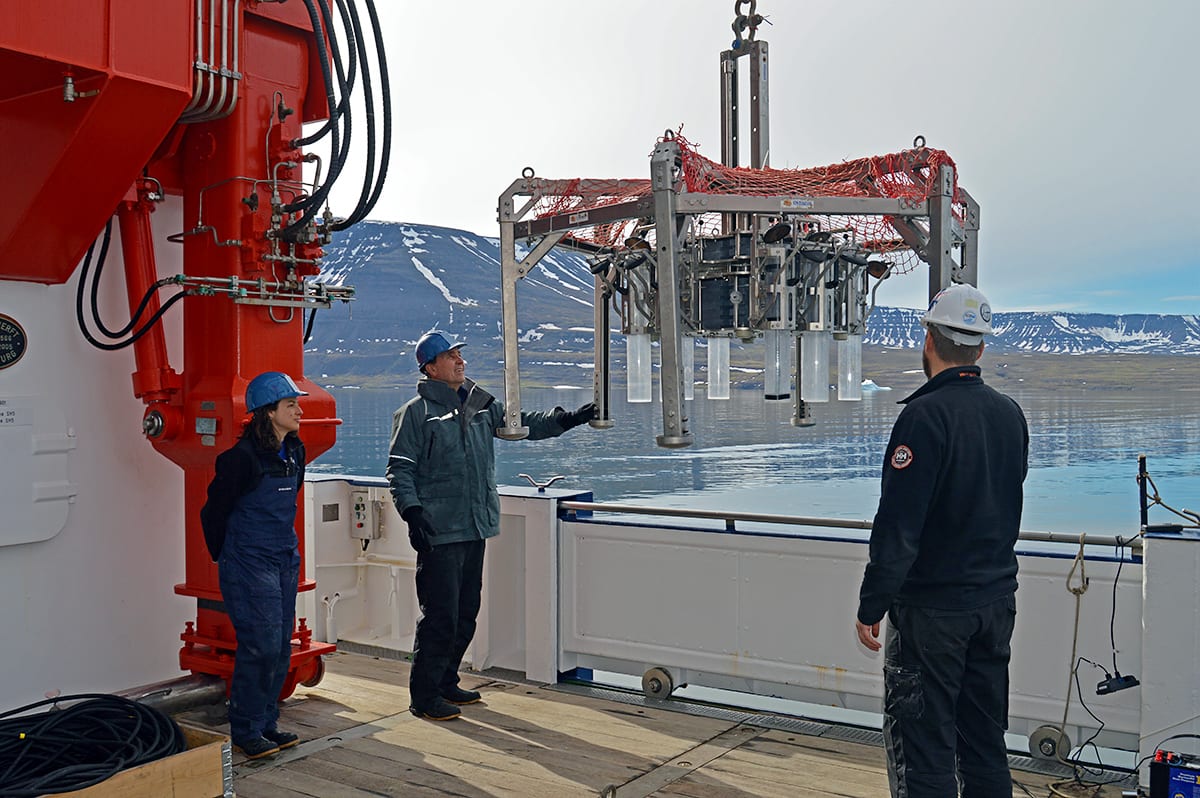
WHOI scientist Don Anderson (center) gently guides an instrument known as a multi-corer as it’s lowered to the ocean bottom off the west coast of Greenland. The instrument takes eight individual sediment core samples from the bottom, which scientists use to look for the presence of seed-like cysts released by harmful algae. (Photo by Nicole D’Entremont, © Woods Hole Oceanographic Institution)
Seeing cells
On a late afternoon in October 2016, Dan Ward, a shellfish farmer on Cape Cod, Mass. came home to some bad news. Government regulators had ordered his business, Ward Aquafarms, to shut down. The culprit was an algal bloom of a species found along the southern Massachusetts coast called Pseudo-nitzschia, which can cause Amnesic Shellfish Poisoning (ASP) leading to permanent short-term memory loss.
“The regulators immediately closed all harvesting,” Ward says. “Just like that, my business and the rest of the shellfishing industry along the south coast shut down.”
Ward knew his oysters, clams, and bay scallops would be fine. This particular species of Pseudo-nitzschia wasn’t a direct threat to shellfish. But it can produce a neurotoxin that accumulates in the shellfish and causes illness and even death in humans who eat them.
Ward Aquafarms sat idle for more than a month, but it turned out that the bloom hadn’t produced toxins that were harmful to people after all.
Ward immediately saw a need to actively monitor HABs around his shellfish beds. Knowing that WHOI was a leader in ocean engineering and technology solutions, he got in touch with Mike Brosnahan, a WHOI biologist who had been using a compact submersible camera system, the Imaging FlowCytobot (IFCB), to detect algal bloom species in the water.
“The sensor produces hundreds of thousands of images a day, allowing us to detect harmful species that produce toxins or kill farmed animals,” says Brosnahan. “And it can stay in the water for many months with basically zero maintenance.”
The instrument, which was originally developed by WHOI scientists Heidi Sosik and Rob Olsen for spying on phytoplankton populations, is roughly the size of a scuba tank and easily hangs off a dock or any structure in the water where monitoring is needed. Inside, the IFCB’s camera takes photos of individual phytoplankton cells at a rate of up to 12 per second. Automated image recognition algorithms identify and count the species.
“We can alert shellfish farmers to the presence of these harmful organisms and give them the opportunity to mitigate whatever damage might come from these blooms,” Brosnahan says.
At Ward’s farm on Cape Cod, the submerged camera system sends alerts when critical thresholds are reached for particular species so that Ward knows when to take action. This involves turning off the incoming water flow to his nursery, switching the system into recirculating mode so toxic water stays out, and turning on an air system to keep oxygen levels sufficient for the shellfish as he and his crew wait out the bloom.
“Once the threat is gone, we just turn the water back on and we’re back in business,” Ward says.
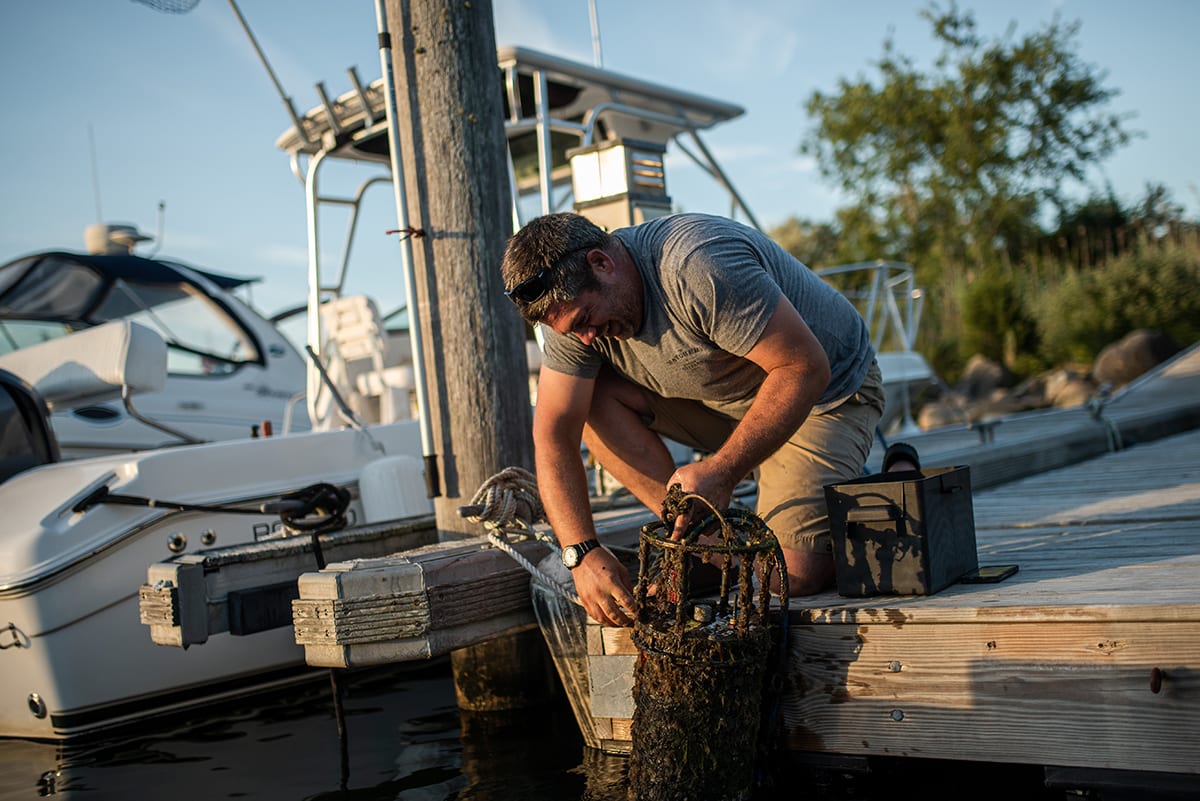
Shellfish farmer Dan Ward pulls up an Imaging FlowCytobot (IFCB) from one of his shellfish beds in Falmouth, Massachusetts. The instrument takes up to 12 photos of plankton cells per second, and uses specialized algorithms to identify harmful algal species that produce toxins. (Photo by Daniel Hentz, © Woods Hole Oceanographic Institution)
Turning back the tide
The Imaging FlowCytobot may be a field-proven tool in the fight against HABs, but mitigation requires more than monitoring. Bloom control strategies that can remove the offending cells and toxins from the water are also needed. Artificial reefs are one solution that’s showing promise.
The City of Bradenton Beach, Florida, in concert with an artificial reef company called Ocean Habitats, recently installed more than a dozen miniature artificial reefs below the Historic Bradenton City Pier to help ward off red tide, which invades the southwest Florida coastline each year. Shellfish and other organisms on the reefs filter water as they feed, and in the process, sift out red tide cells and impair the bloom’s ability to grow.
Other bloom control methods include spraying clay on affected waters. Clay latches onto algal bloom cells and as it carries them to the bottom, some of the cells are destroyed. Researchers are also injecting affected waters with nano-sized bubbles filled with ozone, which destroys HAB cells.
“These types of control measures are very much needed,” Anderson says, “since in the absence of a treatment, blooms can persist and continue to cause problems.” But he says that few of the current technologies are scalable to the point where they can help solve harmful algal bloom problems in small lagoons and across wide stretches of coastline. Also, not enough is known about the potential side effects of current bloom control methods. “We need to fully understand the environmental impacts of each approach to help make informed decisions,” Anderson says.
Marine pathogens
Aside from the occasional jellyfish sting, rogue wave, or shark sighting, going to the beach is generally considered a safe activity. But a more pervasive, invisible threat to public health is lurking on the shoreline: marine pathogens.
Harmful viruses, bacteria, and protozoa thrive in areas contaminated with human sewage, stormwater, or animal feces. They can infect swimmers’ eyes, ears, and wounds, but some infectious microbes come from bathers themselves. Hepatitis A, Salmonella, Legionella and Staphylococcus aureus are just a few good reasons to shower before and after swimming.
Microbes such as fecal coliform are widely used to indicate contamination in seawater, but “sentinel” species and habitats can also act as early warning systems for potential health risks. These “first responders” include sea grass beds, kelp forests, oyster and coral reefs, as well as marine mammals.
“Microbes are fantastic sentinels for human health and health of ecosystem in general,” says WHOI microbiologist Amy Apprill. “Marine life can alert us to potential problems, whether from harmful algal blooms or pathogens that might show up at the beaches.”
Andrea Bogomolni, who studied marine pathogens and viruses as a WHOI research associate, notes that marine mammals can also signal the alarm for potential human health risks.
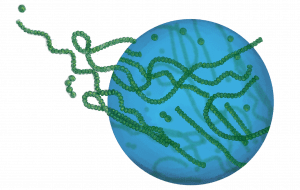
Ocean pollutants
If psychotic birds weren’t strange enough, consider the case of the demented cats.
In the mid-1950s in Minamata, Japan, numerous domestic cats suddenly became possessed, screeching while having seizures and falling into Minamata Bay. Villagers, too, began experiencing strange symptoms: spasms, blurred vision, and even hearing loss.
In time, the ailment became so prevalent, it got a formal name: Minamata disease. The cause? Chisso Corporation, a local chemical manufacturer, had been dumping tons of mercury into the bay for more than thirty years via their wastewater.
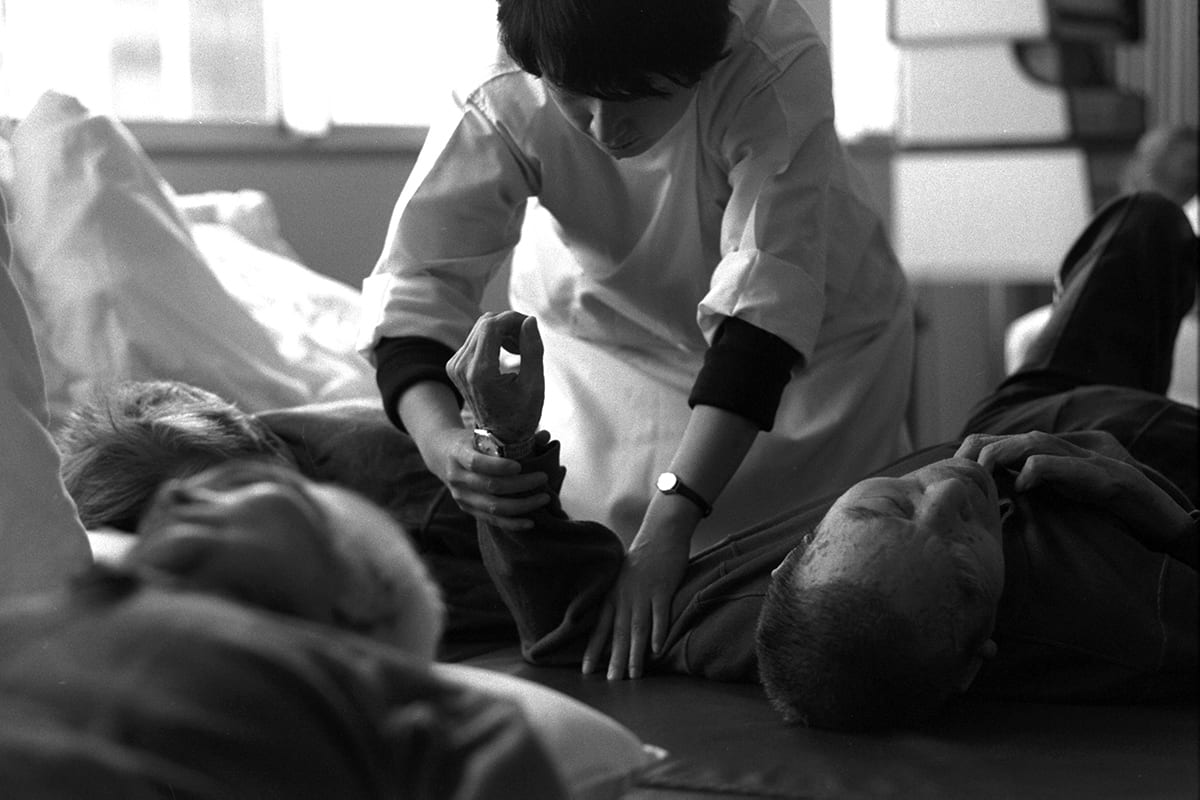
Minamata disease patients at a rehabilitation center in 2016 in Minamata, Kumamoto, Japan. (Photo by The Asahi Shimbun © Getty Images)
Today, more than half-a-century later, environmental pollution—air, land, and water combined—is responsible for an estimated nine million premature deaths per year. In our oceans, pollution takes a variety of forms: toxic metals, industrial chemicals, and microplastics, to name a few. The pollutants stem from a variety of sources including factories, rivers, and the atmosphere, and are found everywhere from the high Arctic to the deepest trenches of the ocean.
“Ocean pollutants are a critical aspect of environmental pollution as a whole, given their ability to bioaccumulate and move through the marine food web,” says John Stegeman. “Despite the fact that some of these pollutants have been around for a long time, however, they are still not well understood or controlled. So they remain a vitally important part of Oceans and Human Health research.”
You are what you eat
It is common knowledge that vulnerable populations, such as pregnant women, should limit their intake of certain fish species to avoid excessive mercury consumption. This is because large predator fish like tuna can accumulate 10 million times as much mercury as the waters they swim in.
Mercury pollution stems from activities like burning coal, making cement, gold mining, and in the case of the Minamata disaster, chemical dumping. Scientists have a good handle on the associated human health effects: infant exposure to mercury can impair brain development and lead to poorer IQ, autism, ADHD, and learning disabilities; adult exposure increases the risk for dementia and cardiovascular disease.
But what scientists haven’t traditionally known much about is how the inorganic and relatively harmless form of mercury (Hg) gets converted in the ocean to its more dangerous and methylated form, methylmercury (MMHg). Methylmercury is a neurotoxin that is taken up by phytoplankton and then moves up the food chain, eventually bioaccumulating in the fish that end up on many dinner plates. Researchers think that knowing its origin may help identify sources that lead to contamination in the food chain.
Former WHOI biogeochemist Carl Lamborg and his colleagues investigated the chemistry behind the conversion and found that one of the likely culprits in the formation of methylmercury is a type of bacteria living in the sediments of certain coastal areas that are able to produce methylmercury through respiration.
The researchers also found high levels of methylmercury in the ocean’s midwater, a layer of water from 100 to 1,000 meters below the surface, also referred to as the ocean twilight zone. There, methylmercury levels spiked in low-oxygen zones, areas in the midwater where dissolved oxygen levels plummet. Celia Chen, a biologist at Dartmouth College and expert in toxic metals research, says that this is the result of anaerobic bacteria munching on carbon from dead phytoplankton that sinks to these depths.
“As the bacteria consumes the organic carbon, they respire and cause the oxygen to drop, making the conditions right for methylation to occur,” she says.
Climate change is an increasingly important factor in mercury contamination of the ocean. Chen and her colleagues are investigating the link between warming ocean temperatures and the uptake of methylmercury by fish through a series of lab experiments on both forage fish and crustaceans. They have found that the warmer the water, the hungrier the animals, and as their metabolic rates and food intake increased, so did their uptake of the toxic metal.
“As the ocean faces increasing climate pressures, it’s important to understand how mercury is acting in the marine environment and whether fish are bioaccumulating more of it,” says Chen. “That directly increases the health risk to people who eat seafood. After all, we are what we eat.”
PCBs
One of today's more worrisome pollutants in our oceans today ceased production in the U.S. during the late 1970s, when President Jimmy Carter was in office. PCBs—polychlorinated biphenyls—contribute to a host of human health problems including endocrine disorders, reduced male fertility, nervous system damage, and increased risk of cancer and cardiovascular disease. PCB exposure can also interfere with thyroid function and brain development.
Production of these chemicals, which began in 1929, grounded to a halt in 1977 as reports of the health effects went public. A federal ban in the U.S. went into effect two years later, but today, PCBs are still very much in the environment.
“Most of these chemicals are not biodegradable, so they continue to persist in the global ocean, bioaccumulating in top predators like Orca whales and seals, as well as fish that we eat,” says WHOI post-doc Nadja Brun, who works in Stegeman’s lab.
Brun has been investigating the neurological impacts PCBs can have on both animals and humans. In laboratory experiments on larval zebrafish, a biologically-relevant organism often used for biomedical studies, she and other members of Stegeman’s team exposed the fish to PCBs to see how the chemicals affected their swimming behavior.
The fish exhibited slower escape responses and, in some cases, none at all.
“Similar to humans, dopamine and serotonin are involved in these processes, so we can hypothesize that similar neurotransmitter effects could occur in humans as well and cause movement disorders,” says Brun. “By understanding the relationship between PCBs and these mechanisms, we can apply our knowledge to help come up with solutions, like the design of safer chemicals or possibly treatments to counteract the effects.”
Marine microplastics
As WHOI biologist Scott Gallager poked through the filthy mound of freshly dredged sea scallops with his shovel, he had a hunch: their guts would be loaded with tiny microplastics.
It was the summer of 2017, and Gallager was collecting adult scallops as part of a NOAA scallop survey in the Gulf of Maine. His thought was that microplastics were sticking to algal blooms at the ocean’s surface, and once the blooms decayed and sunk, they’d take the plastic bits down with them to where filter-feeding scallops would ingest them.
“Sea scallops are clearly a shellfish that a lot of people enjoy eating,” says Gallager. “So if this is happening, then maybe we should avoid eating shellfish during certain parts of the year.”
As ocean scientists work to fill remaining knowledge gaps about legacy ocean pollutants like mercury and PCBs, an emerging pollutant—marine microplastics—has been gaining a bigger share of the spotlight. According to a recent report, the amount of plastic entering the ocean annually could triple in the next two decades and by 2050, there could be more plastic than fish in our waters.
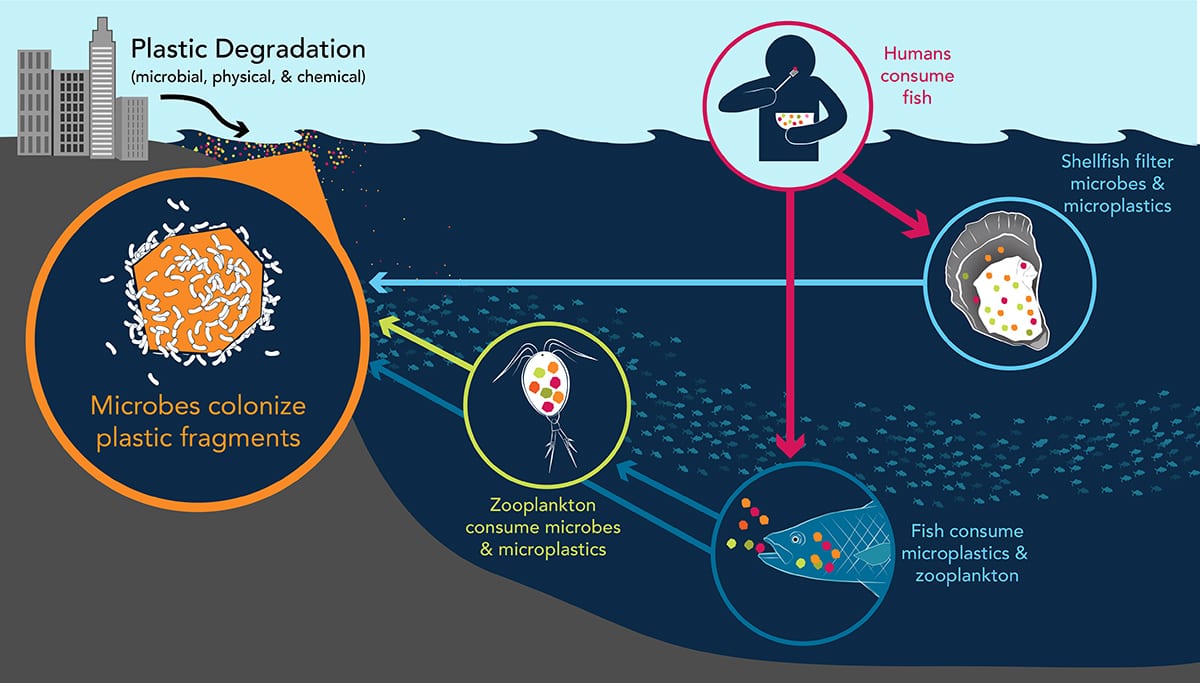
Plastics that get into the ocean often degrade into microplastics that are ingested by fish and shellfish and can go up the food chain to be ingested by humans. (Illustration by Natalie Renier, WHOI Creative © Woods Hole Oceanographic Institution)
WHOI toxicologist Mark Hahn, who leads the institution’s Marine Microplastics Initiative, says that microplastics “fit into the overarching category of industrial contaminants we release into the oceans that may come back to bite us through our consumption of seafood.” But he says it’s too early to tell.
“Although microplastics have emerged in the last decade as pollutants of grave concern, the human health impacts aren’t well understood,” says Hahn.
Tiny plastics, big investigation
Microplastics science is a tricky business. There’s uncertainty about the amount of microplastics in the ocean and how much marine organisms consume. And, there’s a seemingly endless number of sizes, thicknesses, and colors that today’s consumer-based plastics come in, and health effects can vary depending on the types of additives used.
Collin Ward, a marine chemist at WHOI, agrees with Hahn that the science hasn’t matured to the point where a clear link can be established between microplastics and environmental and human health.
“Microplastics are referred to as an ‘emerging’ pollutant for a reason,” says Ward. “There is so much foundational knowledge we don’t have that would be necessary to understand how risky this pollutant is versus others in the marine environment.”
Into the web
Like Gallager, other researchers have been investigating how microplastics get into the marine food web, and ultimately into humans. In a 2013 study, WHOI scientists, along with colleagues from the Marine Biological Laboratory (MBL), discovered tiny pits and grooves missing in plastic particles found in the ocean, suggesting that hungry microbes may be snacking on the material and, in turn, coating them with a biofilm that fish find appetizing.
But when a fish eats microplastics, do the microplastics remain inside that fish when we sit down for mealtime? The jury is still out. In a study published in July 2020 in the journal Marine Pollution Bulletin, researchers at the Helmholtz Centre for Polar and Marine Research fed young European sea bass feed laced with extremely high concentrations of microplastics for four months and found virtually no microplastic particles in the fish fillets.
“Even though we subjected the sea bass to extremely high microplastic pollution in comparison to their natural setting, in the end there were only one or two particles in every five grams of their fillets,” reports Sinem Zeytin, lead author of the study. “This, along with the fact that the fish grew very well and were in perfect health, tells us that the fish can apparently isolate and excrete these particles before they have a chance to penetrate their tissues.”
Terra incognita
Heather Leslie, a research scientist at Vrije Universiteit Amsterdam and a leading expert in microplastics, also acknowledges that a direct link between microplastic exposure and adverse human health outcomes has yet to be established. But she’s wary about claims suggesting that an absence of proof indicates an absence of risk. Last year, the World Health Organization (WHO) stated that “humans have ingested microplastics and other particles in the environment for decades with no related indication of adverse health effects” and that there is “no evidence to indicate a human health concern.” Statements like these worry Leslie.
“Many misinterpret this statement to mean there’s no health concern, but that is far from certain at this point,” she says. “No one’s done a human risk assessment yet.”
Leslie refers to this area of research as an analytical “terra incognita”—unexplored territory. She questions how “no risk” can be supported by “no data” and feels that we all should wait until the evidence is in before coming to a verdict about the risks to humans.
“It’s harder to tell a compelling story,” she says, “if all you can say is ‘we don’t know.’”
Leslie hopes to find more conclusive evidence soon. She and her colleagues are working on methods for measuring the amount of microplastics—or doses—in human bodies.
“No one has measured the actual doses of plastic particle pollution in our bodies yet, so we don’t know how much gets absorbed in the gut or lungs or taken up into the bloodstream,” says Leslie. “You can’t make any real hard claims about risk if you don’t know the exposure.”
She says that if we simply excrete the particles and they’re unable to get to target sites in the body where they cause toxicity, they may not be dangerous to us. “The fine and ultrafine fractions of plastic particles are thought to be more prone to be absorbed and could linger longer in the body, while bigger particles are more likely to pass through the GI tract,” says Leslie. “This is why it’s important to develop highly-sensitive methods to detect trace amounts of fine and ultrafine plastic.”
“In toxicology, we often say that the dose makes the poison,” says Jed Goldstone, a research specialist who has been studying marine toxins for nearly two decades at WHOI. “A handful of microplastics probably won’t matter, but if the estimates are correct, there are an awful lot of plastics out there,” he says. “But we haven’t known for sure because we haven’t had the technology.”
Fortunately, solutions are on the horizon. Ocean scientists and engineers are testing new technologies that can find and identify microplastics in the ocean in real time. This includes a new type of “flow-through” sensor that counts and sizes microplastics directly in water and can distinguish between plastics and biological particles such as copepods. WHOI scientist Anna Michel, whose lab is developing the solution, says the instrument can make this distinction by measuring the electrical properties of the plastics as they permeate through the sensor.
“This sensor operates continuously on a flow of water, so we envision turning it into a low-cost, field-going microplastic tool to help researchers capture the dynamics and fate of microplastics in aquatic environments,” she says.
» Learn more about WHOI's Microplastics Initiative
An ounce of prevention
“Dad, are you going to eat that?”
It’s a question Stegeman has heard time and time again from his own kids during family seafood dinners over the years.
“When the kids were growing up and we’d sit down to eat at a local restaurant, I would regularly ask where their shellfish came from,” Stegeman says. “This gave me a sense for whether or not it may have been contaminated.”
Of course, not everyone has the same kind of “insider info” that the director of the Woods Hole Center for Oceans and Human health does. But the fact he eats shellfish is encouraging. He knows, however, that just because toxins may be below levels that are dangerous, it doesn’t mean they aren’t present.
“We just don’t know yet what the health impacts are when we’re exposed to low levels of toxins that are invariably present in the water,” he says.
We know that some of the guidelines that have been put in place for COVID-19 clearly work if we adhere to them. It’s really no different with marine toxins. Anything we can do to reduce our exposure will have profound effects on human health.”
—Fred Tyson, program director, National Institutes of Health
It’s just one of many questions he and other scientists need to tackle to make our oceans safer for people. Continuing to study the hazards and monitor their effects will be essential to coming up with solutions, which might range from enacting legislation that limits mercury emissions from coal plants to designing plastics that are safer for people and the environment.
Fred Tyson, a program director with the National Institutes of Health, says that improving human health and safety in the ocean is principally about putting strategies in place that reduce human exposure and allow us to stay ahead of the curve—similar goals that frame the fight against COVID-19.
“We know that some of the guidelines that have been put in place for COVID-19 clearly work if we adhere to them,” Tyson says. “It’s really no different with marine toxins. Anything we can do to reduce our exposure will have profound effects on human health.”

